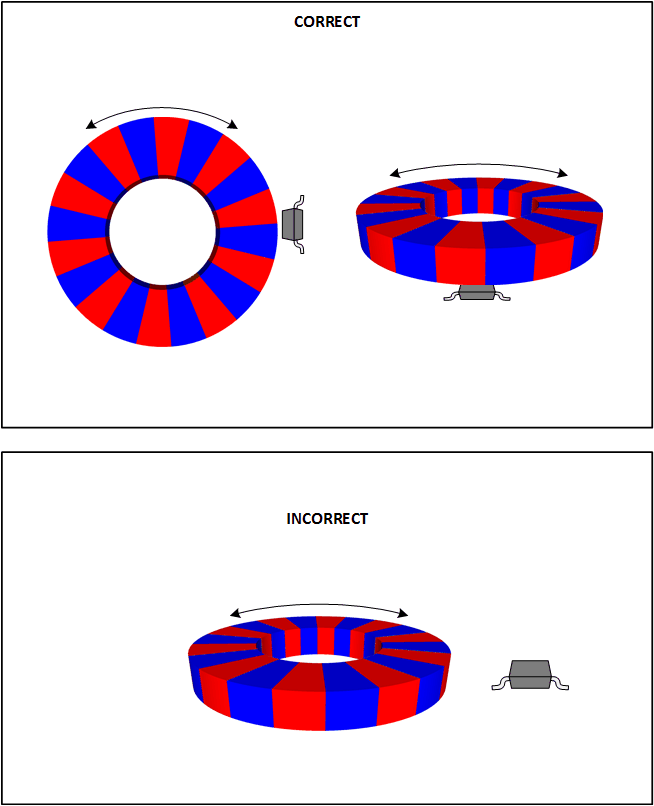ZHCSHJ9A June 2018 – April 2019 DRV5015
PRODUCTION DATA.
8.3 What to Do and What Not to Do
The Hall element is sensitive to magnetic fields that are perpendicular to the top of the package; therefore, the correct magnet orientation must be used for the sensor to detect the field. Figure 22 shows correct and incorrect orientations when using a ring magnet.
 Figure 22. Correct and Incorrect Magnet Orientations
Figure 22. Correct and Incorrect Magnet Orientations